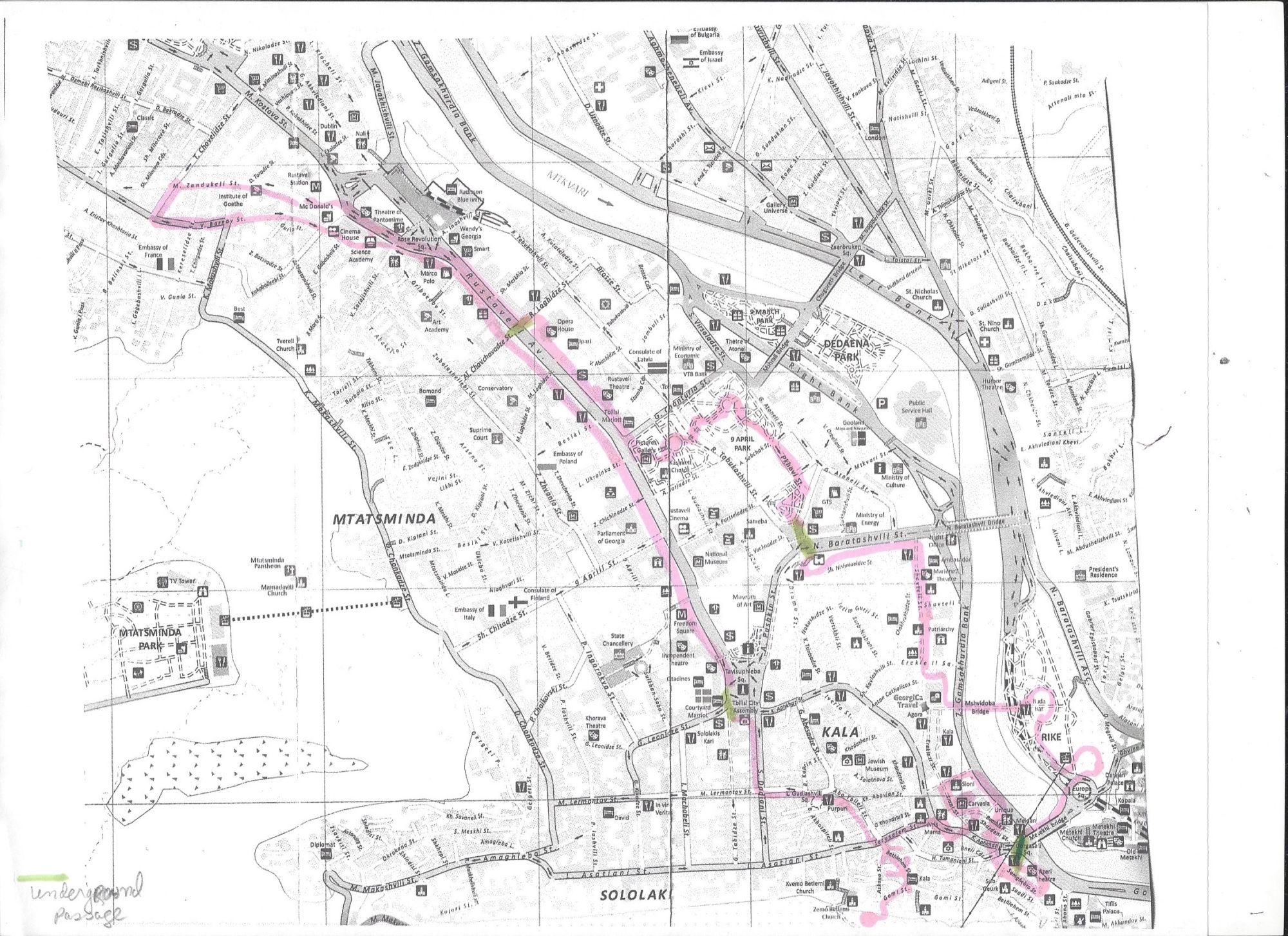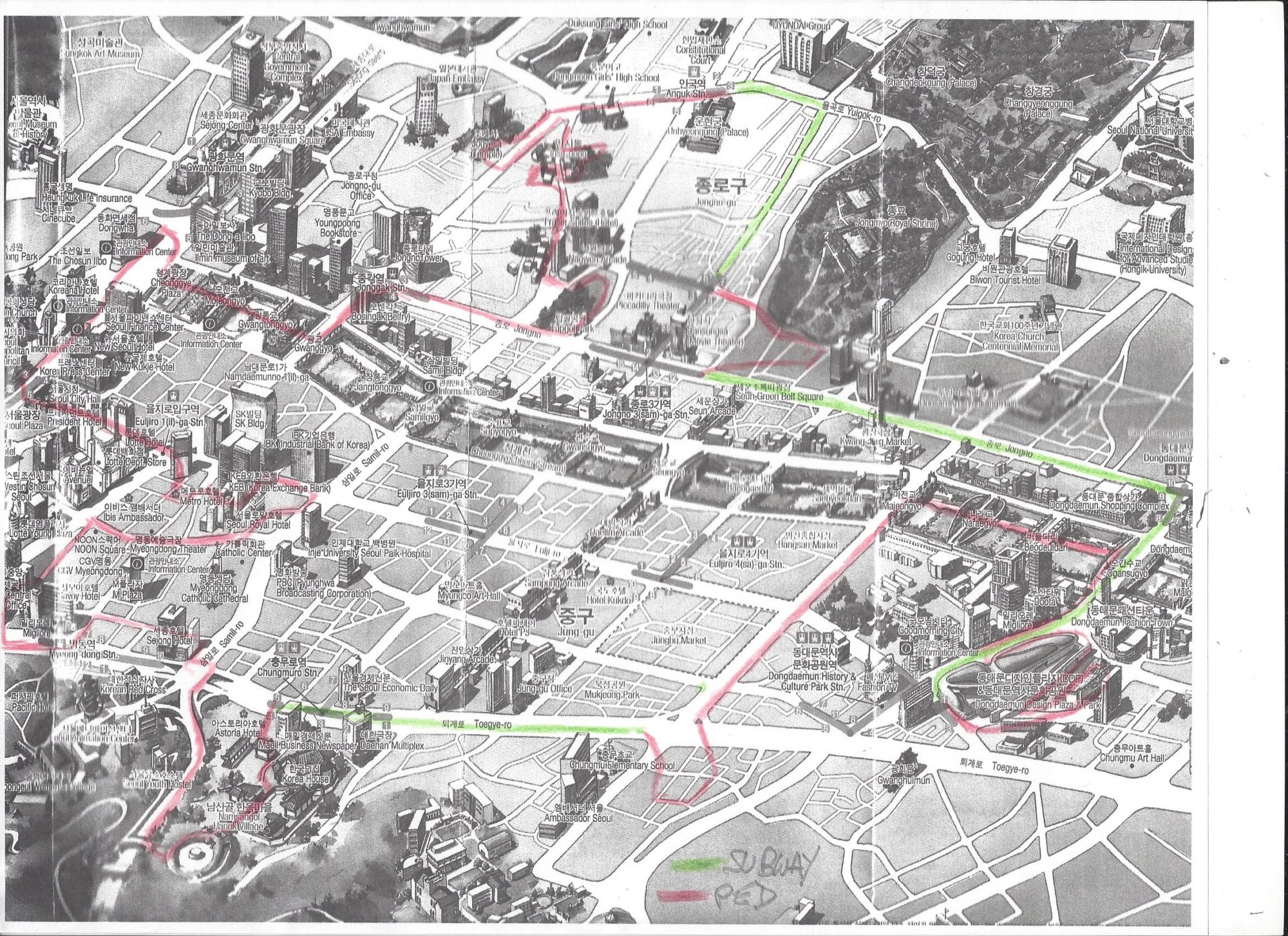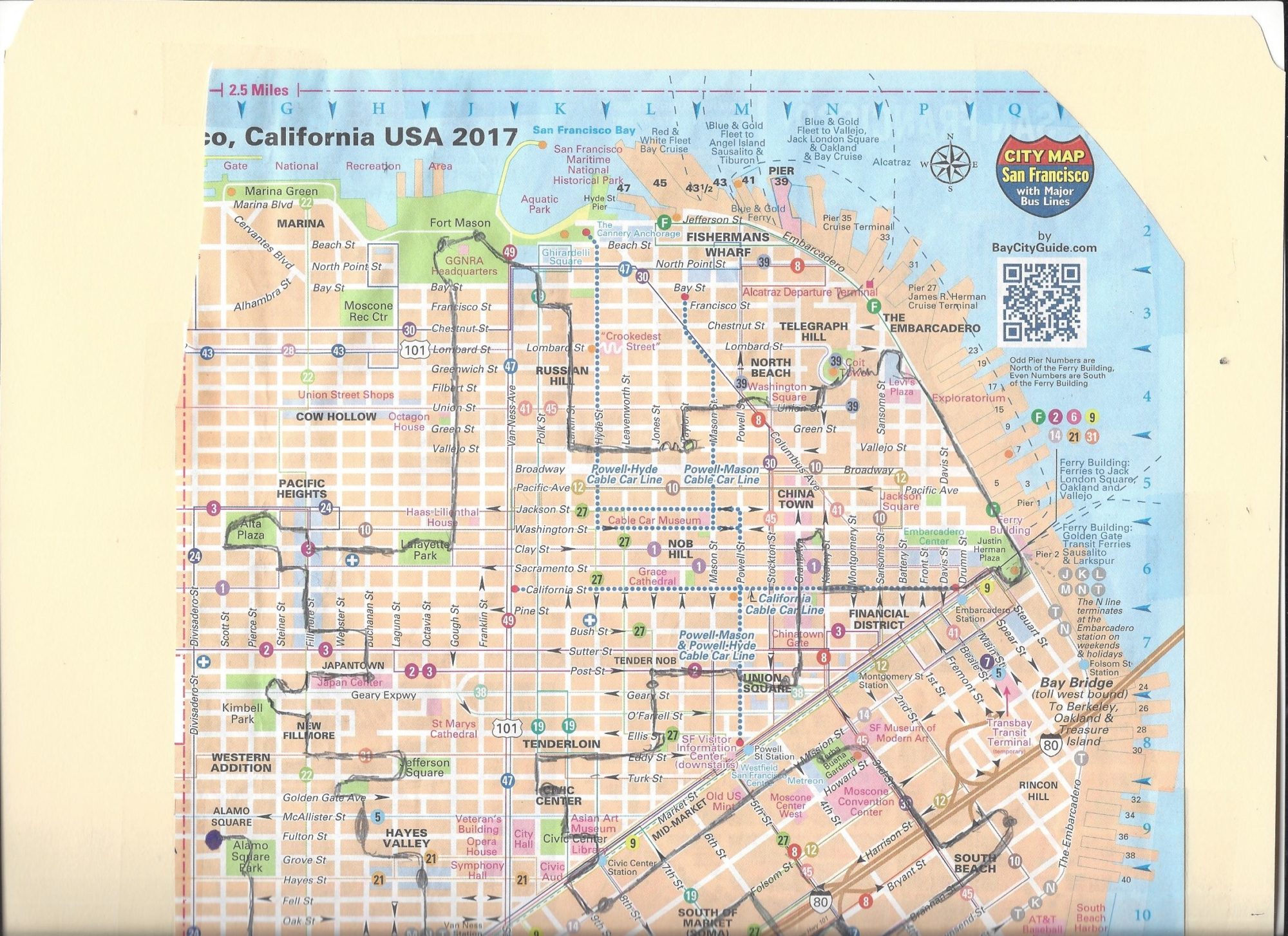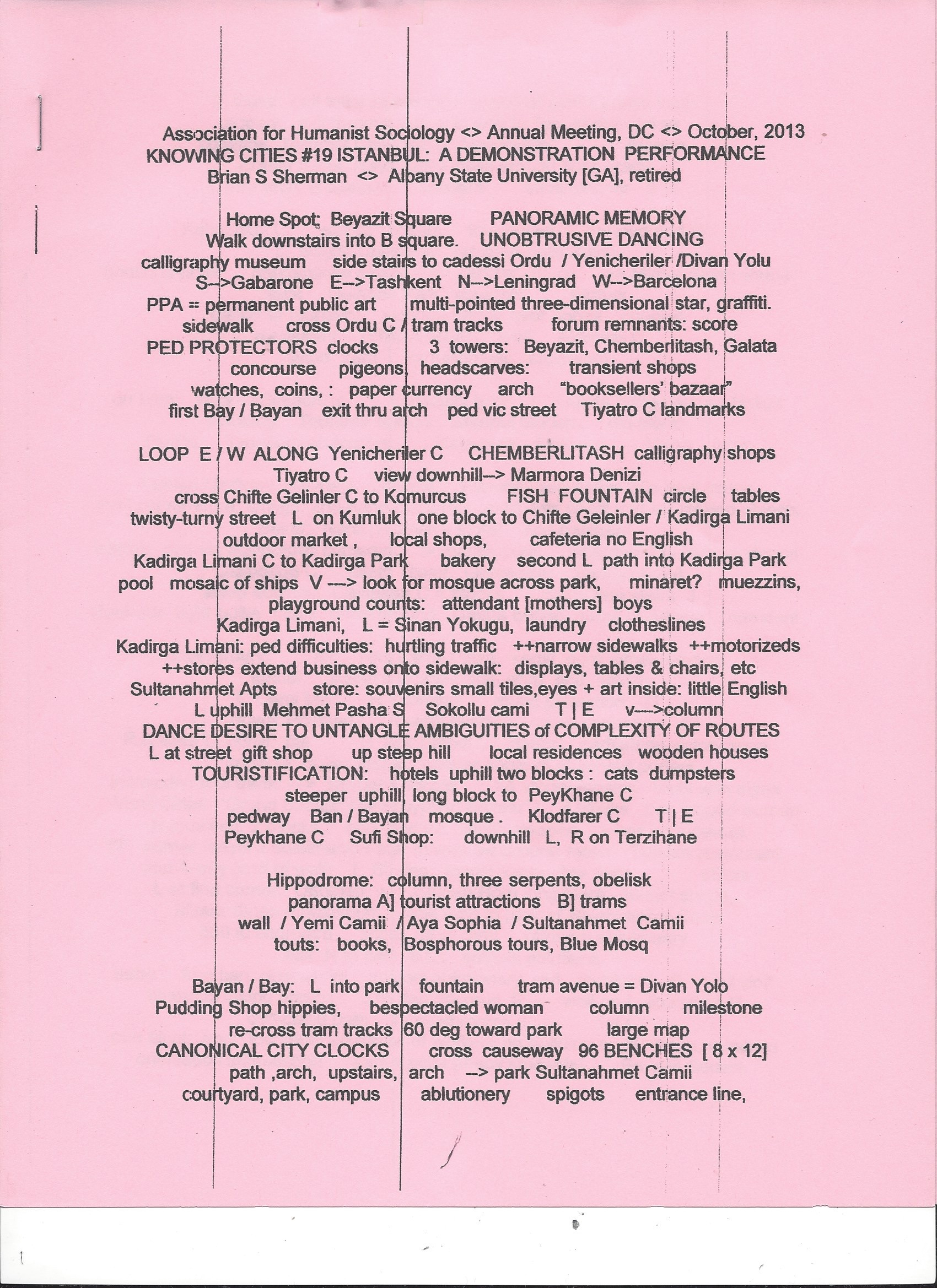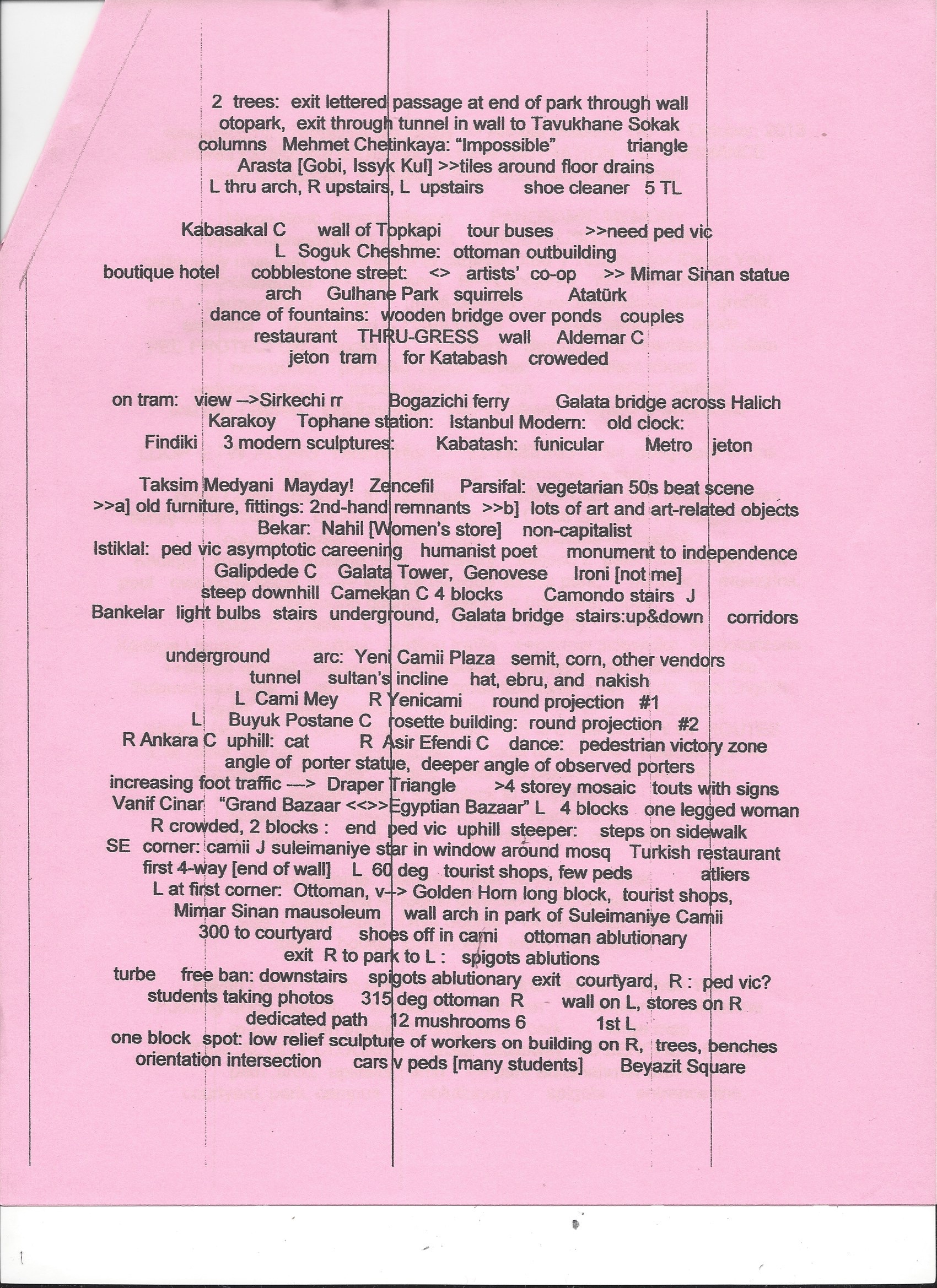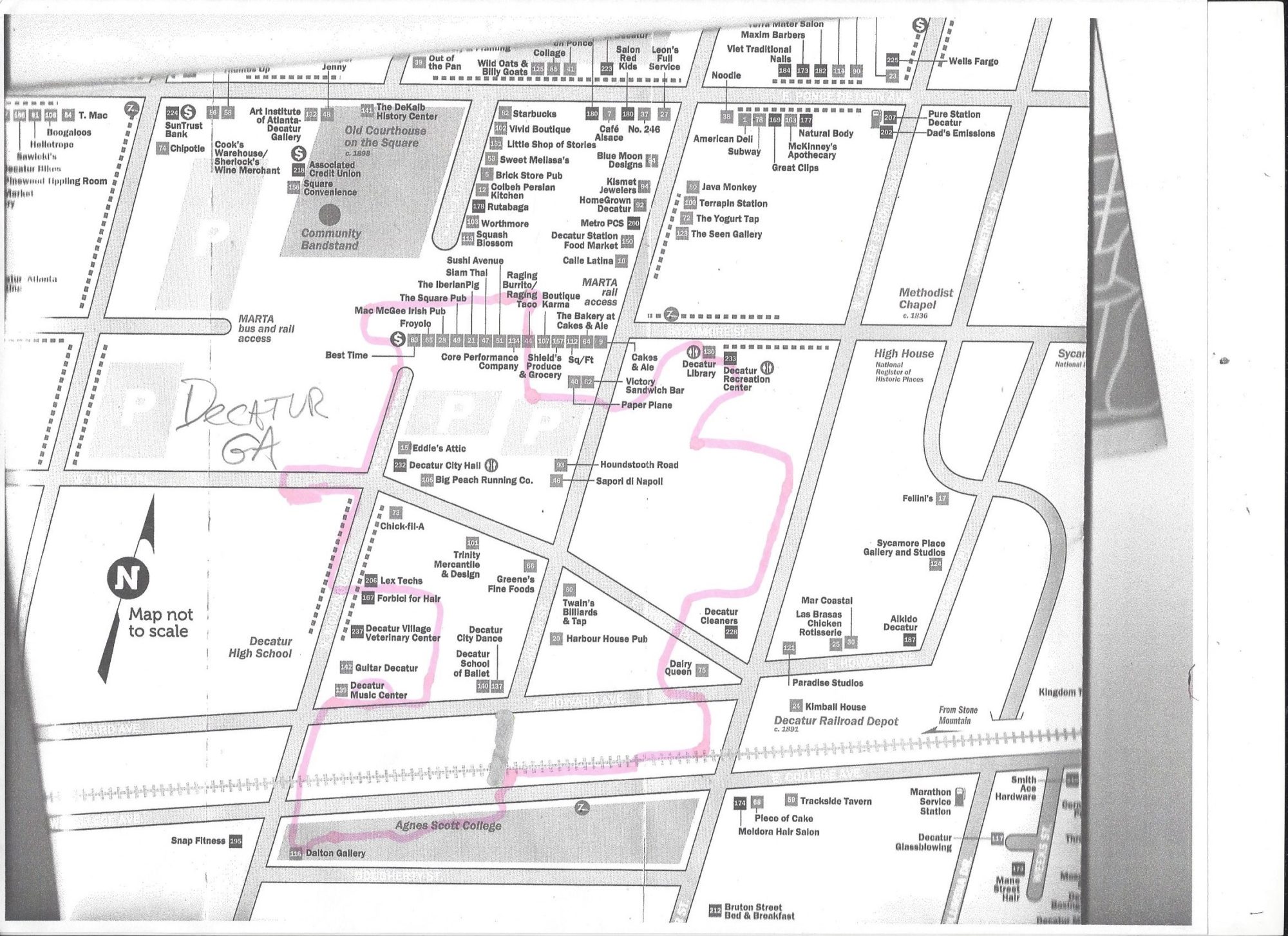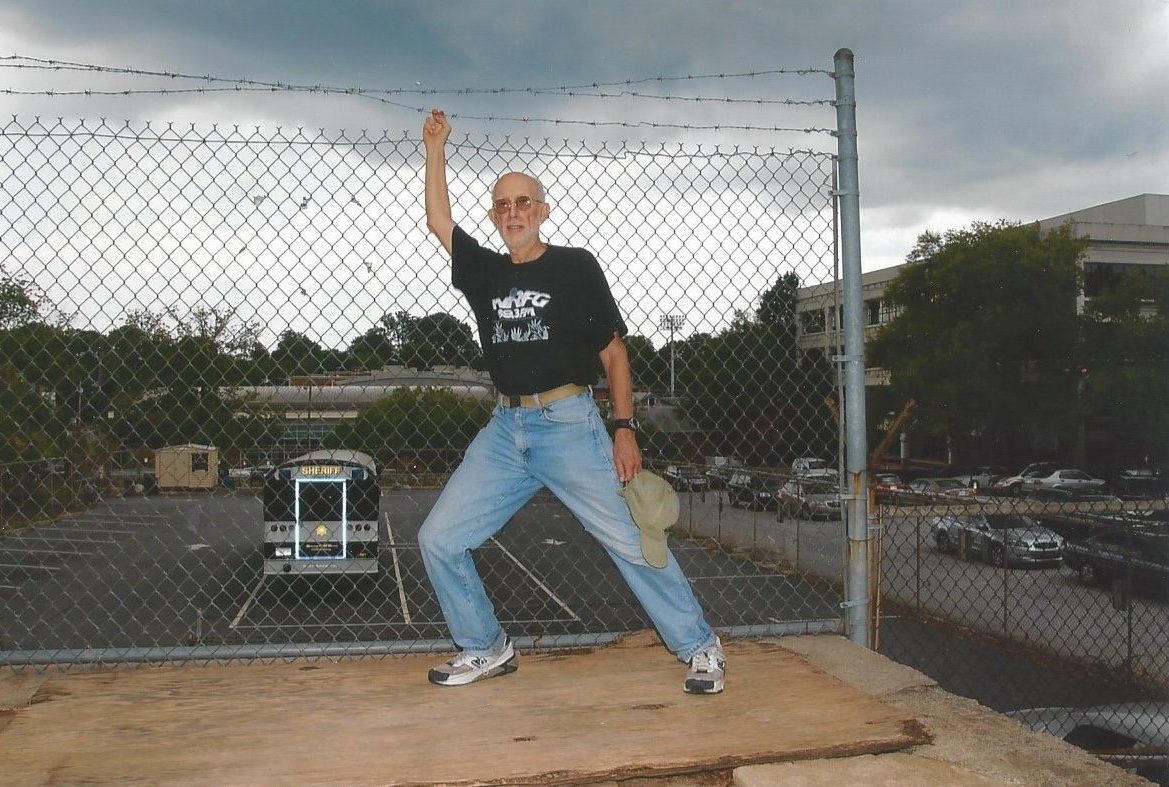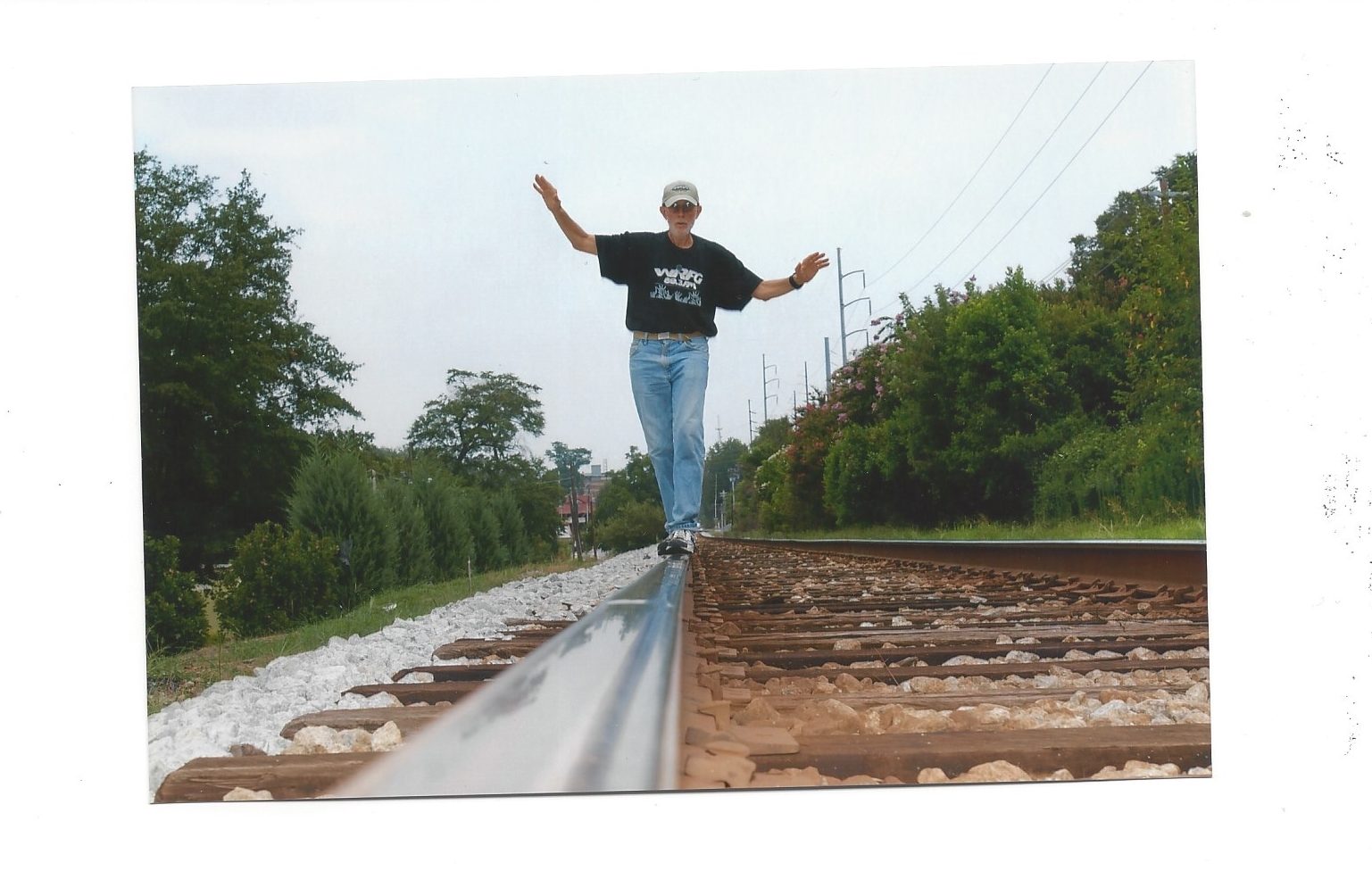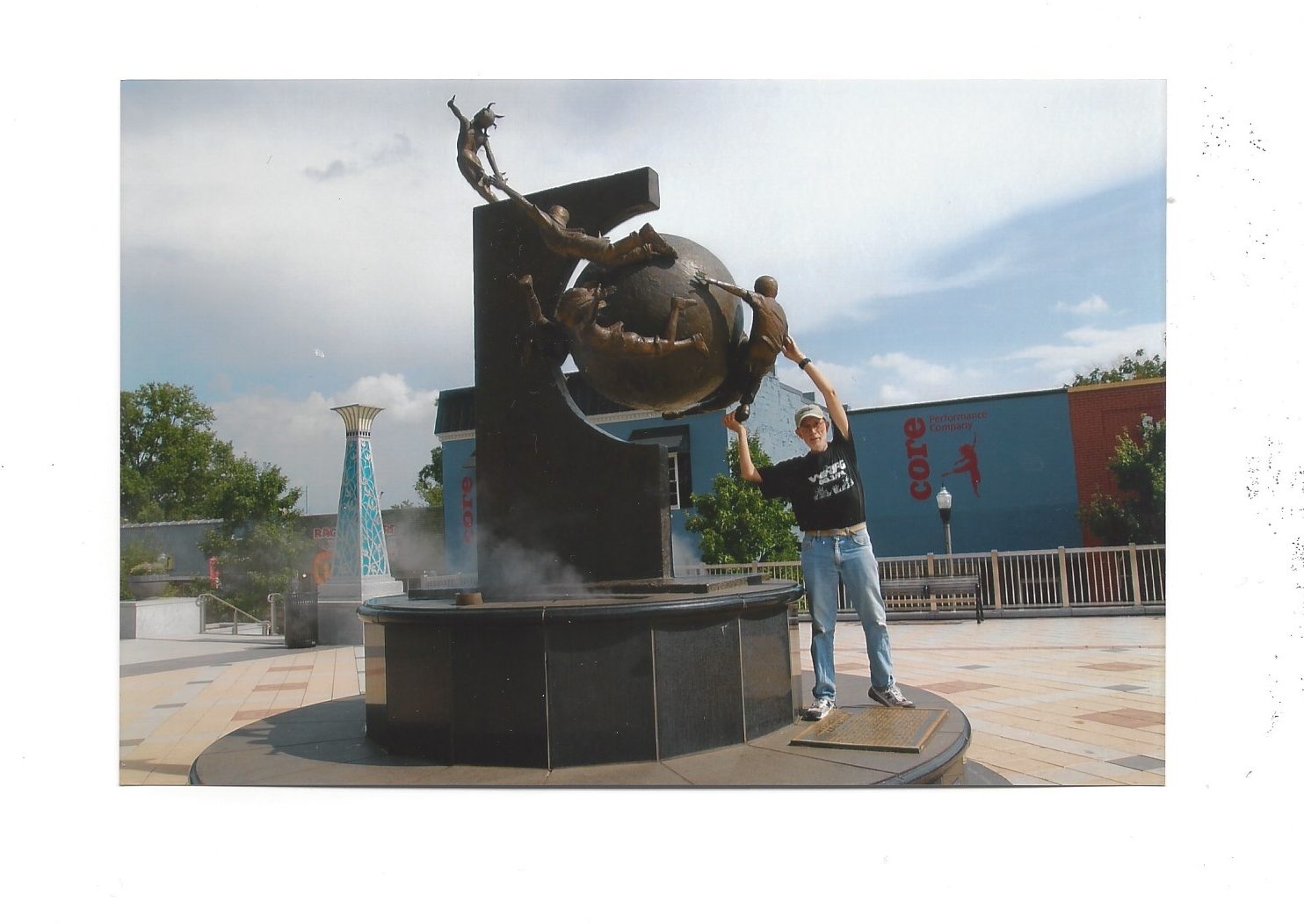The Practice of Circuit-Making
Share:
I think of making circuits as a way of “knowing a city.” After creating a circuit I like to think that I can relate to the circuit anything else I learn about the city – whether in a news article, fiction, movie, essay, new public art, whatever.
The circuit almost always goes through the central city. I usually start with a map – either in a guidebook or a single sheet I obtain at my hotel or the airport. I go to the center of the city as indicated on the map and then I start exploring in ever-widening circles. I note spots I want to include in the circuit. I also note sidewalks and other pedestrian ways, sometimes interesting in themselves. I especially like to include pedestrian-only ways and “pedestrian victories.” The latter are streets which had been for vehicles at one time but now are primarily or exclusively for pedestrians. Insadong in Seoul and Istklal in Istanbul are wonderful examples of pedestrian victories.
After compiling dozens of spots, I plan the route of the circuit and map it out by connecting the spots and pathways in a single circuit. I then walk the circuit several times, making adjustments to enhance the experience, and enjoying the momentum of walking the parts of the circuit already fixed. Sometimes I feel ecstatic at certain points and I invent little dances. I sometimes imbue some spots on the circuits with progressive sociopolitical viewpoints and create rituals/scores/dances to express my thoughts at those spots.
The longer genre name for the circuits is PAIC. Sometimes P is for “performance” and sometimes P is for “participatory.” The AIC is always for “Art and Information Circuit.”
I think of my circuits as experiences I can re-create as performances for myself in my loft. I have 5 feet square space for such performances [and other dances, etc]. Performances before an audience are fun to do because unlike in my loft where I’m on my own time, I have only a finite time in a presentation. I experience it as a tour-de-force performance due to fast simultaneous moving and talking. I’m continually editing as I perform.
I’ve created circuits in about twenty-five cities; almost all of the circuits include the downtowns of the respective cities. (One exception: Henderson, a suburb of Las Vegas.)
My circuits are comprised of “spots” connected by “paths.” All worked out exactly, though I do make changes and additions if I’m back in a city in which I’ve already created a circuit.
There is usually a “home spot” which is the spot to start and to finish. It’s generally an interesting/complicated spot I like to experience twice. I also like home spots to be convenient [e.g, near our hotel].
Until 1996 in Paris I thought of riding transit as the main way of exploring cities. But after riding all of the Metro lines for three days and getting off and back on at the ends-of-the-lines, I came to realize Paris was a small city better explored on foot. I’ve been exploring cities mostly by walking ever since.
The circuits are in my body as dances and in my mind as creations. They’re a great way to join body and mind in artistic/esthetic work. I like the process of putting things, objects, ideas—whatever—together. It’s the same enjoyment as for creating assemblages, etc.
I feel satisfaction when I’ve completed a circuit even if I didn’t have more than a few hours to do a relatively short one [e.g, Esfahan, Iran; Cuthbert, GA]. I also find pleasure in going back to a city and adding to the circuit.
My wife Barbara has been very supportive of my circuit creations when we travel. She was especially encouraging when I was working out the path in Istanbul from the statue of “The Draper” uphill through the crowded narrow streets in the Mercan neighborhood to the corner with the mosque which has three six-pointed stars in its window decoration.
TBILISI
HOME SPOT: an artwork – mostly a painting – by David Kakabadze on the second floor of the national gallery. The work has two concave metal disks – I dance forward and back watching my motions reflected in the discs. A separate forward-and-back dance for each disk.
I have a subway by-loop in the Tbilisi circuit just for the sake of riding the subway, getting off the train at a station buying a cultural chotchka in the market there and doing a short by-loop before getting back on the train and back to the subway station at which I entered.
I enjoy the challenge of working out the details of circuits with few or no by-loops and without the circuit crossing itself. In Seoul, for example, there’s a loop which exits and returns to the same subway station but I manage to keep the exit from and re-entrance to the subway separate.
My circuits are basically walking circuits, but I like including non-internal combustion public transit – trams & subways – on my circuits. I once gave a presentation at a sociology conference on how using public transit is an extension of walking.
SEOUL
HOME SPOT: Entrance block from Namdaimon street to Meong Dong [a hip zone of shops, clubs, and street eateries] Mostly pedestrianized. Thronged with young people, especially evenings.
This circuit has pedestrian victories, hypermodern architecture, an urbanized stream and statues commemorating resistance to the Japanese occupation. Seoul is a wonderful city if you like a city that works. I call it the most efficient American city.
SAN FRANCISCO
HOME SPOT: Ramon’s Tailor, an art gallery on Jones Street just south of Post, a few blocks from my hotel on Bush. I’m currently a first-time participant in their annual collaborative collage project.
These are for cities so well-known I call them “canonical cities” – that is they are cities widely known in movies, TV, other media. I have themes for circuits in canonical cities. So far I’ve created circuits in only two of them: “Parks” in SF [I’d also like to do one for vegan restaurants]; “Ribbon-like features” in downtown Manhattan. [One was a ribbon of paint in the roadway near the Franklin St subway stop. I’d be pleasantly surprised if it’s still there.])
ISTANBUL
HOME SPOT: Beyazit Square
The Istanbul Modern [IM] has been on my Istanbul circuit since I first created the Istanbul circuit six years ago. I like the crunchy feeling and sound of the outdoor steps and ramps walking up to the 2nd floor main entrance to the IM and I like going via Monica Bonvinici’s staircase down to the first floor, her piece permanently installed since an earlier biennial. I like the sounds of metal [I’m referring here to actual metal substance not the musical genre] so I like going up and down the staircase.
Istanbul Modern is a “by-loop” on my Istanbul circuit. By by-loop I mean there’s a point on the circuit from which I begin the loop and after completing the loop return to the same point on the circuit. I usually avoid by-loops – I like to keep sections of the circuit apart, but to be at Istanbul Modern I need to alight and rejoin the tram line at the same station: Tophane. As I recall there are no other pedestrian by-loops in any of the circuits here.
DECATUR
HOME SPOT: Public Library
I’ve gone to only five cities for the purpose of making circuits. Most of the other cities in which I’ve created circuits I was there because:
>>>a] Barbara and I were traveling there. She usually picks the destinations: Chang Mai [northern Thailand]; three cities in Myanmar [Yangon, Hpa’an, Yaungshwe]; Esfahan [Iran]; Viang Chang [capital of Laos]; Ulanbaatar [capital of Mongolia]; Leon, Nicaragua; Barcelona.
>>>b] I was there for a conference. True only of cities in the US [Portland, OR; Lowell, MA; Columbus, OH; Santa Fe].
>>>c] I was visiting a friend [Melbourne, AU], my mom’s burial [Melbourne, FL], etc.
>>>d] I live here: Atlanta & Decatur [inspired by the ART PAPERS MARTA cover!]
I created four nineteen-minute walks with 1, 3, 7 & 19 -minute points starting at my house in downtown Decatur. (I use 3, 7, 19 because they’re prime. I generally work with prime numbers in order to avoid the triviality of subdivisions. Beside Decatur I used the 1, 3, 7, 19 method in Samarkand [in Uzbekistan, though Samarkand should be the capital of Tajikistan—it’s a Tajik city].)
I like the process of putting things, objects, ideas—whatever—together. It’s the same enjoyment as for creating assemblages … and my own version of assemblages, which I call “bowlages”: objects collected in various bowls. I bring several bowlages to the monthly improvisational dance sessions called “dance church” in Decatur. It’s on Sunday mornings.
Brian Sherman in Decatur [photo: Al Viola]
